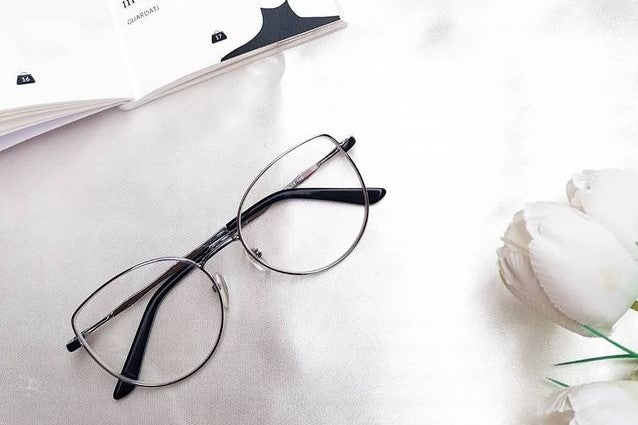Titanium is currently too expensive to refine.
It is highly demanding in buckling, stamping, cutting, and welding. The extraction of titanium, like that of aluminum before the 19th century, was quite costly and produced in limited quantities, so it was used only in extremely important fields, such as aerospace, electronics, precision instrument manufacturing, and so on.
3 Common Problems with Progressive Lenses
Though progressive lenses are popular to correct some eye conditions, there are also some drawbacks. So, in the following section, we will show you some common problems with progressive lenses.
Dizziness: the three different focal lengths of progressive lenses can make people susceptible to dizziness, as well as vertigo. From long to medium to short distance, the lenses offer a gradient of increasing strength. So, it would have trouble in adapting the glasses for the people who are wearing them for the first time. A common mistake is to look out of the wrong focal length, causing their vision to be blurry and lead to an overall feeling of dizziness.
Peripheral distortion: another common problem of progressive lenses is the way in which they blur peripheral vision. Most glasses cause an initial distortion to vision. However, the three different segments found in these lenses can make that distortion feel more prominent than other pairs of eyeglasses. And most people may need two weeks to adjust to progressive lenses.
Depth perception: Since progressive lenses provide three different prescriptions to see objects clearly for different distances, it is important that you need to move your head instead of your eyes when focusing on objects at different distances. Prior to adjusting to this little nuance, progressive lenses can cause depth perception to feel off.
From the above information, you have known some common problems with progressive lenses. So, you may ask how to adjust the progressive lenses. The most popular way is that you need to wear them frequently.
How to buy anti-blue light products?
In order to further standardize anti-blue light products and make all kinds of products effectively protect eye health, relevant standards have been formulated. Based on the different effects of blue light in different bands on the human body, the transmittance of blue light in each band is required in the standards.
For example, in the band range of 415-445 nm, the transmission ratio of light is less than or equal to 80%, and more than 445 nm, it is greater than 80%.
Who should wear low bridge glasses?
According to the website of the American Optical Association, low-bridge glasses are for people with a low bridge of the nose (when your nose is at or below the pupil level), a wide face, or high cheekbones. This pair of glasses fit anyone with a low nose. If you have a tall bridge, it's great to have a bridge near the eyebrow line. If you have a low bridge of the nose, a more curved brow or a lower bridge of the nose frame is a better choice. Because the dimensions of the bridge are measured from the inside of the frame, a thick-sided frame with the same bridge dimensions and a very thin frame will not fit. It may actually be too small. Because it allows for extra edges.
Blue light in natural light
Blue light is not the unique light emitted by electronic products, but the visible light that exists in natural light, usually with a wavelength of about 400-500nm. The blue light in the entire waveband can be subdivided into two parts. One part will cause optical damage to the retina of the eye and accelerate the oxidative senescence of cells in the macular area of the retina. Usually, the wavelength of this part of blue light is between 415-450nm, and its damage to the eyes is gradually accumulated and formed. There is also a part of blue light that is beneficial to our human body, that is, blue light with a wavelength of about 480nm. It can adjust biological rhythms and is helpful for sleep, mood, and memory. In addition, experiments have confirmed that daily outdoor activities in the sun can effectively prevent the occurrence of myopia, and short-wavelength blue light may play an important role.
Free home trial
They know how important it is to try and touch glasses before buying them. That's why Free home trials are available at Glasses Direct. And it's totally free! They are delivered daily to your home, so every customer gets an unlimited number of home trials, covering hundreds of unique styles, and it's an unmatched experience. At Glasses Direct, they make it easier to help you find your next pair of glasses.
Anti-reflection Coating
Anti-reflection Coating, known as reflective coating and antireflection film, is called anti-reflection coating in English, or AR Coating for short. Initially, anti-reflection coating technology was used in the sights of weapons. It was only after the war that the technique was used to improve the performance of eyeglasses. Another problem occurs when taking pictures because the lens's surface is relatively reflective. The resulting photos don't show the eyes of friends who wear glasses. This problem is solved by plating anti-reflection film.











































